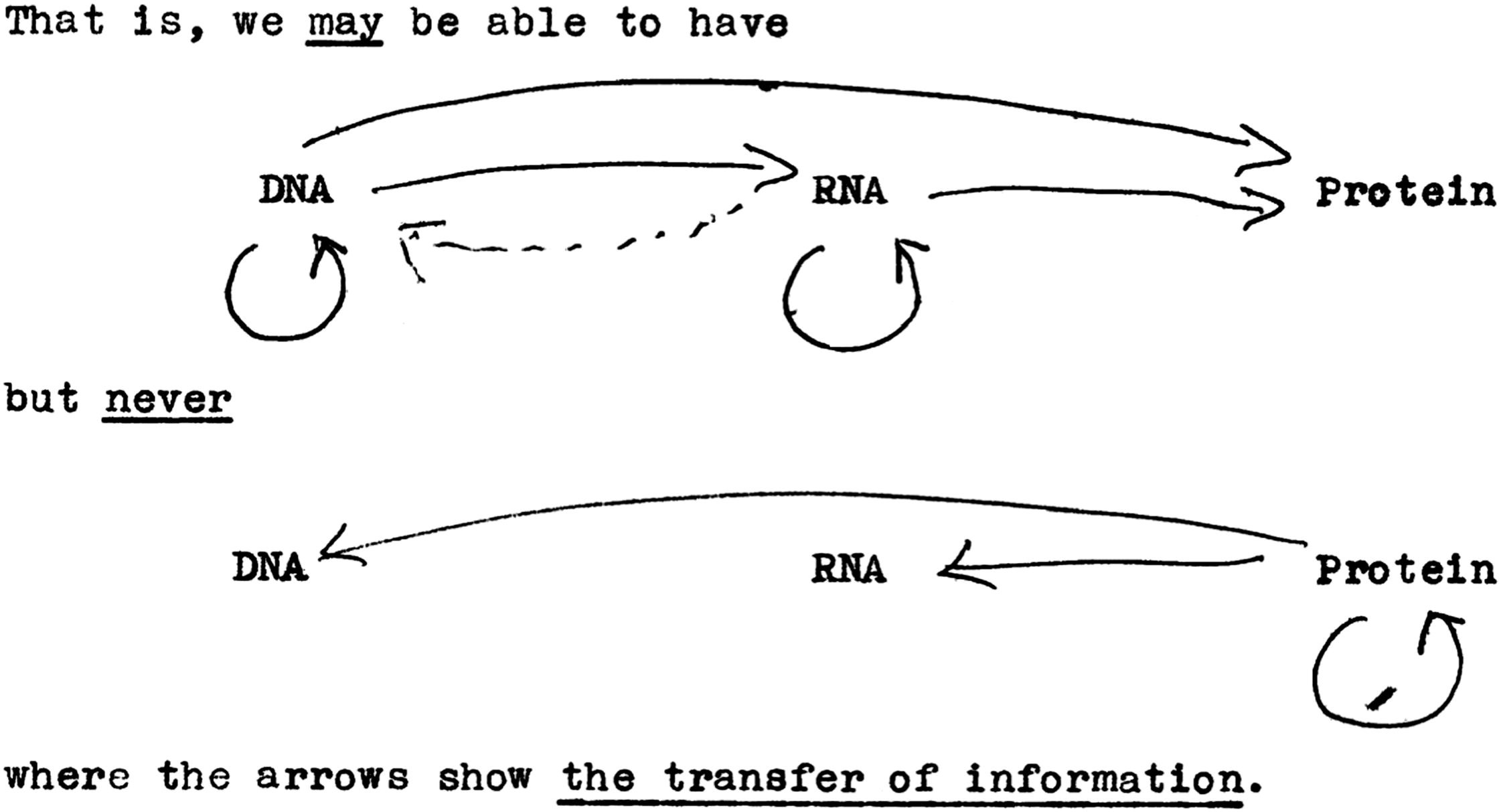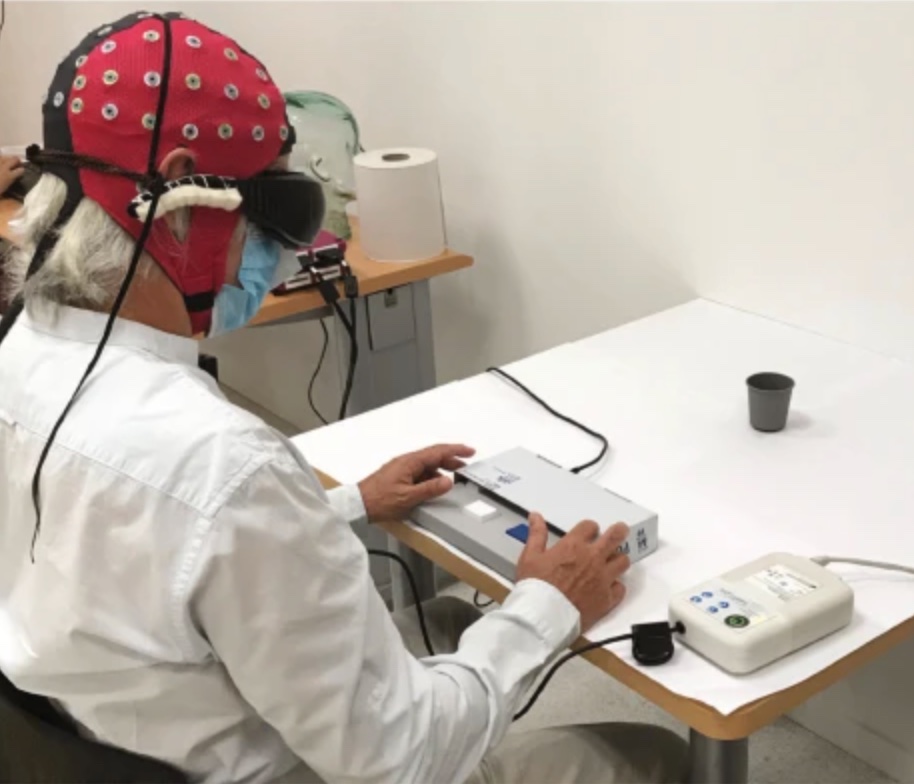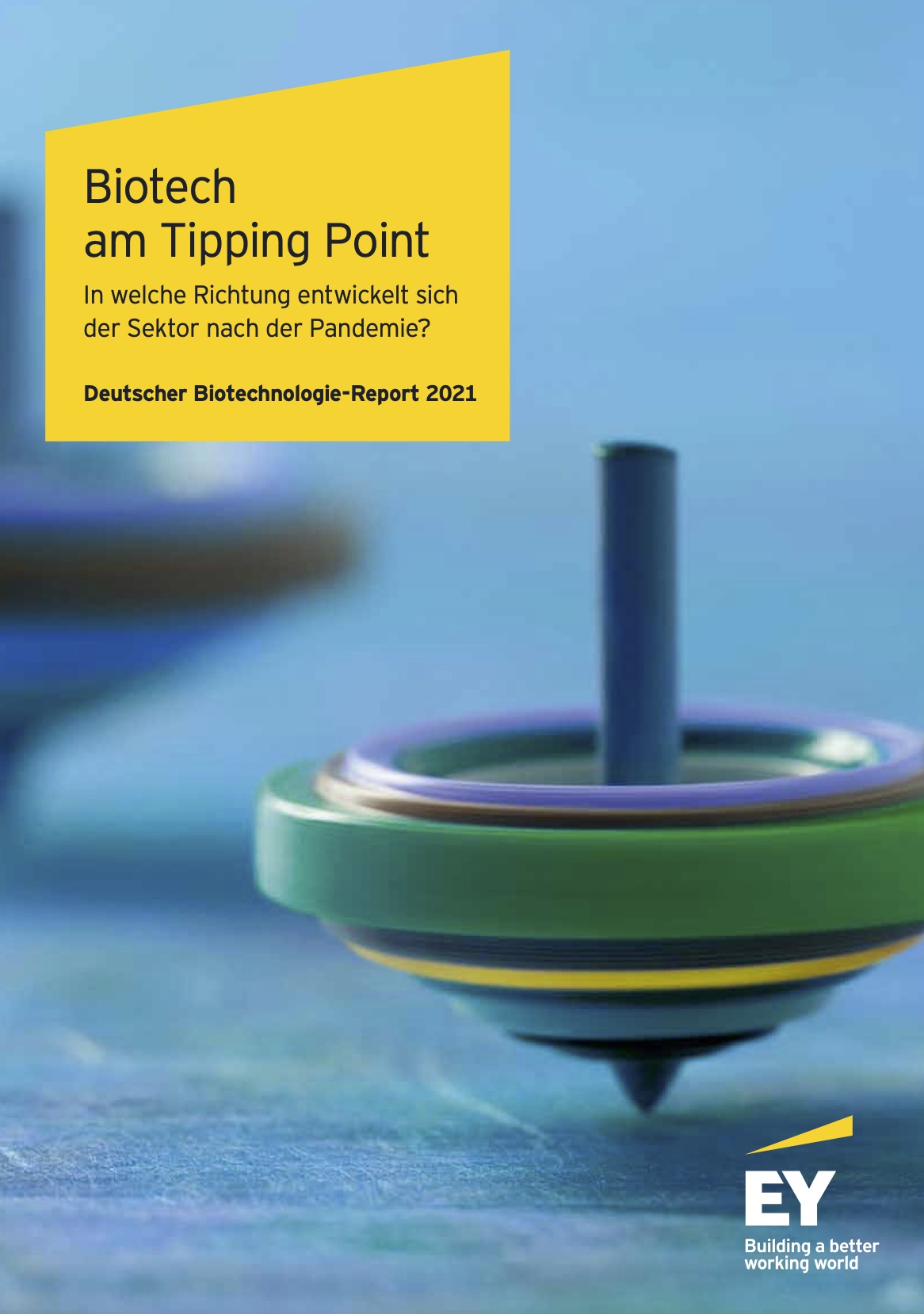Part 1 of the series on the history of mRNA (vaccines) dealt with the events before 1961, which is considered by many publications to be the year of discovery of mRNA. In 1961, an exciting head-to-head race started between working groups from the Universities of Cambridge in England (Brenner), Harvard in the U.S. (Watson) and the Institute Pasteur in Paris (Jacob & Monod).
Watson's group thought they had almost reached their goal. They found that protein synthesis occurs via activities of a transient molecule they called "template RNA". Watson (who also was called Jim instead of James) heard about the manuscript submitted to Nature by Brenner, Jacob & Meselson (see also part 1). In a February 1961 telegram he then asked Brenner to delay the publication. Watson still wanted to finish his manuscript with the aim of announcing the research results of both groups via two articles in the same issue of Nature.
This then happened in May 1961:
- Brenner et al. | An unstable intermediate carrying information from genes to ribosomes for protein synthesis (pages 576-581)
- Gros et al. | Unstable ribonucleic acid revealed by pulse labelling of Escherichia coli (pages 581-585)
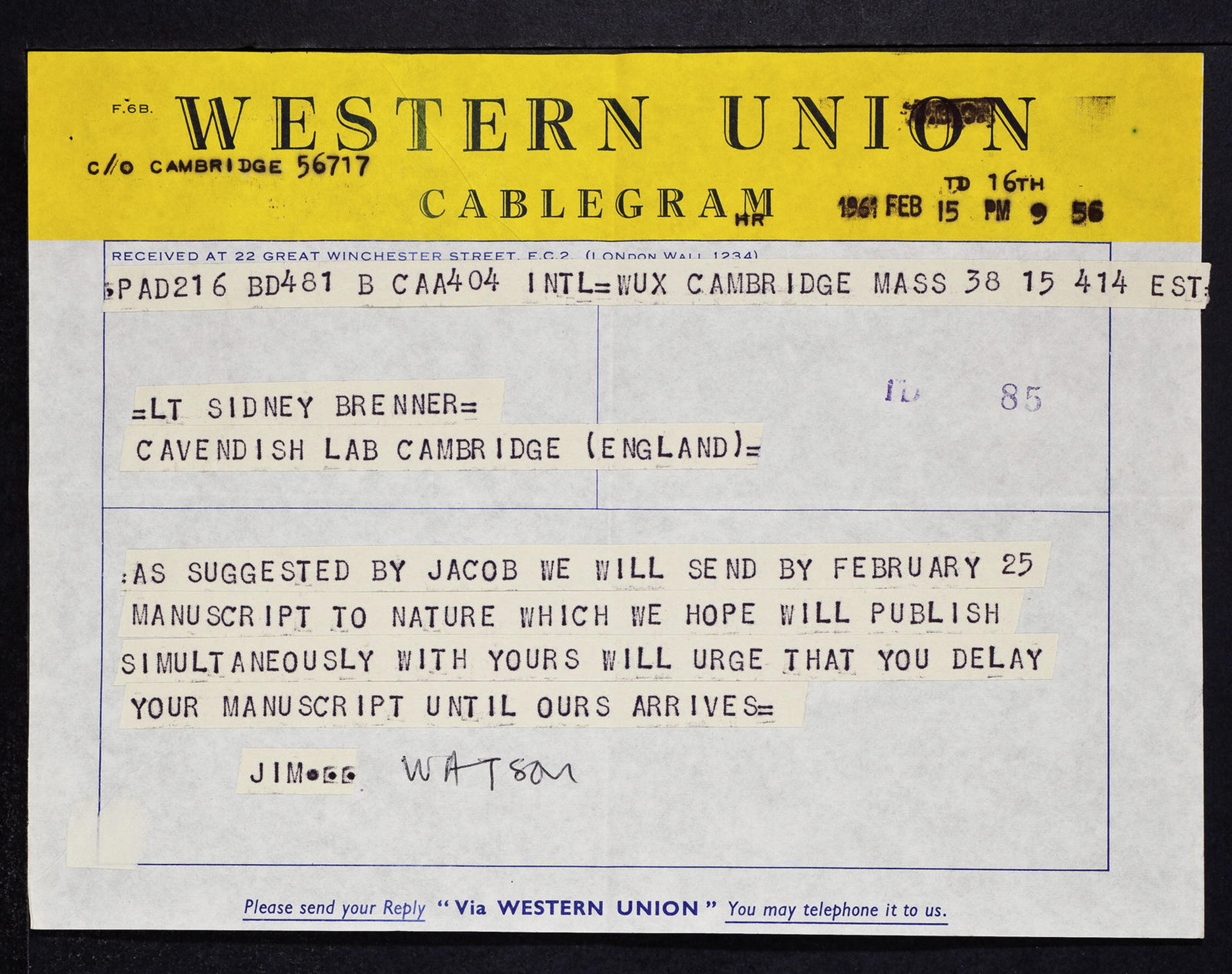
Telegram Watson to Brenner (Feb 1961)
(photo credit: Cold Spring Harbor Laboratory)

The operon model (photo credit: Institut Pasteur)
In the meantime, however, the Paris scientists Jacob & Monod continued to work on their model of gene regulation and renamed their molecule "X" into "messenger RNA". They thus introduced the term "messenger" in an overall concept and used the abbreviation mRNA for the first time. They summarized their findings in a long article that also appeared in May 1961 in the Journal of Molecular Biology: "Genetic regulatory mechanisms in the synthesis of proteins" was the title. It described the so-called "operon model" of gene regulation.
Both researchers were awarded the Nobel Prize for Medicine in 1965.
In addition, as early as April 1961, a publication by Matthaei & Nirenberg appeared on the subject of cell-free protein synthesis. They also dealt with ribosomes and used the term "messenger RNA" without, however, giving a precise classification and citing other publications. Their greatest achievement was experiments that were the basis for deciphering the genetic code. They published the results in October 1961.
In 1963 then, other scientists demonstrated that viral nucleic acids trigger the production of interferon in infected cells. In 1969, Lockard & Lingrel provided the first evidence for in vitro translation of mRNA.
A short excursion into science
In vitro stands for "in the test tube": The body's own protein factories (ribosomes) convert the genetic information stored as a DNA copy in the mRNA into proteins (see also "Understanding Biotech"). The information in mRNA is a "chemical language" based on four letters. It is a kind of instruction for the protein machinery present in the body's cells, which is millions of times more efficient than any laboratory. The cellular machinery produces trillions of proteins for normal body function every day.
mRNA vaccines give body cells an extra little bit of information so that the production process that is going on anyway produces a few more proteins. Namely viral envelope proteins, which the human immune system recognizes as antigen (antibody generating; kind of trigger signal) and forms antibodies in response. mRNA synthesized in a lab and introduced into body cells can theoretically instruct the production of:
- viral and tumor-specific antigens
- cancer-blocking molecules
- designer nucleases (high-precision "gene scissors") to repair defective genomes
- cardiac or other tissues by stimulating stem cells.
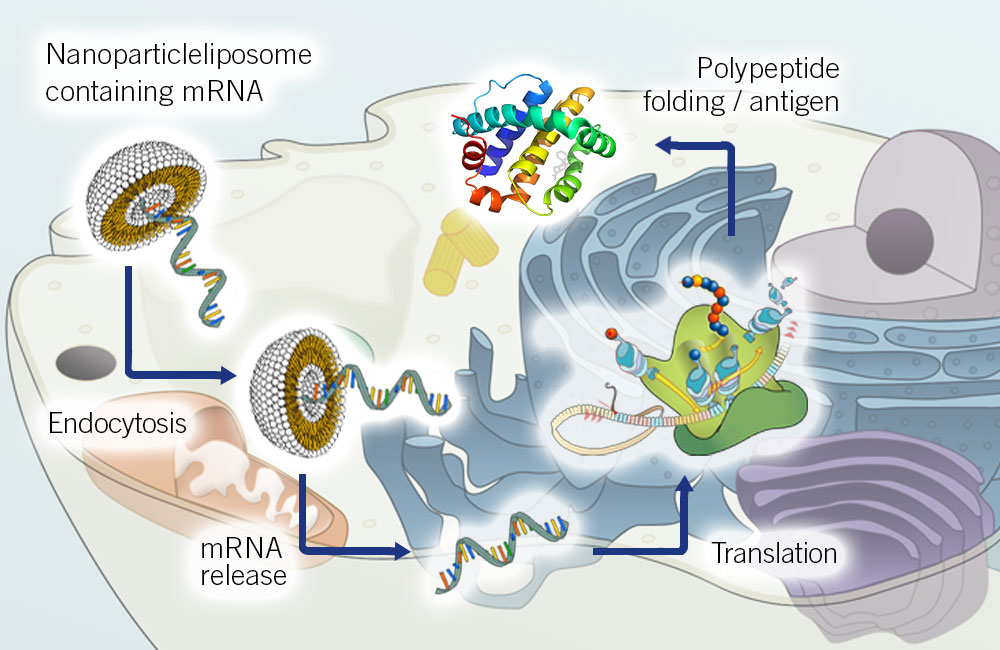
Thus, a mRNA therapy is like a "software of life" or like an "operating system of medicine".
Further milestones into the 1990s
But away from the future and back to history. We were stuck in 1969 and the detection of in vitro translation of mRNA. A brief overview of some of the other milestones up to the 1990s (first author only):
- 1978 | "Liposome-entrapped mRNA delivery": introduction of mRNA packaged in lipid globules into cells | G. Dimitriadis
- 1984 | In vitro transcription by RNA polymerases: reading and transfer of DNA into RNA by special enzymes that catalyze polymerization (individual RNA building blocks, the monomers, are joined together to form chains, polymers) | P. Krieg
- 1989 | "Cationic liposome mRNA delivery system (DOTMA)": in vitro synthesized mRNA delivered into cells and expressed; hypothesis for gene therapy resp. to use mRNA as drug; vaccines not mentioned | R. Malone
- 1990 | Proof of in vivo translation of naked mRNA (withoud lipid coat) in mice | J. Wolff
- 1990 | Filing of patent: "The method can be used to deliver a therapeutic polypeptide to the cells of the vertebrate, to provide an immune response upon in vivo translation of the polynucleotide, to deliver antisense polynucelotides, to deliver receptor to the cells of the vertebrate, or to provide transitory gene therapy"; no further proof regarding vaccination, not followed up | Felgner, Wolff, Rhodes, Malone, Carson of company Vical
- 1992 | Using mRNA encoding vasopressin injected into rat brain, diabetes could be corrected in rats | G. Jirikowski
- 1993 | mRNA, encoding an influenza virus nucleoprotein, stimulates in vivo formation of cytotoxic T cells in mice; discussion of relevance to vaccine development; not pursued further | F. Martinon
- 1995 | First "cancer vaccination" via mRNA encoding a tumor antigen (specific surface molecules on cancer cells): after 3 weeks, the immune system of the test mice developed antibodies | R. Conry
- 1997 | First company to develop mRNA cancer vaccines: spun out of Duke University by Eli Galboa, Dendritix (Merix Bioscience from 1999) originally intended to be on market with novel vaccines in 2005; renamed Argos Therapeutics in 2004 (bankruptcy in Dec 2018, relaunched as CoImmune in 2019)
- 1999 | First evidence of an immune response via T cells after injection of specific antigen of a skin tumor | W. Zhou
- 1990s | First publications & patent filings by Katalin Karikó and Ingmar Hoerr (see part 3)
For both applications of mRNA, as a vaccine against viral infections and against cancer, researchers found that the immune system responded by producing antibodies and killer cells. The 1990s thus laid the foundation for further progress in the new millennium.
Sources used:
- Special thanks to Laudea Research (patent research & analysis): Dr. Anna Wieczorek and Sylwia Owczarek Jacobsen (Sep 2021)
- Tamseel Fatima and Dr. Andreas Ebertz, Eurofins Genomics, published on Blog (Apr 2021); image source mRNA vaccine functionality
- Institute Pasteur on the discovery of mRNA in 1961, published as News (Feb 2021); image source operon model (cover image)
- Matthew Cobb, "Who discovered messenger RNA?", Current Biology (Jun 2015); image source Watson's Telegram
- Ugur Sahin, Katalin Karikó and Özlem Türeci, BioNTech SE , Nature (Sep 2014)





